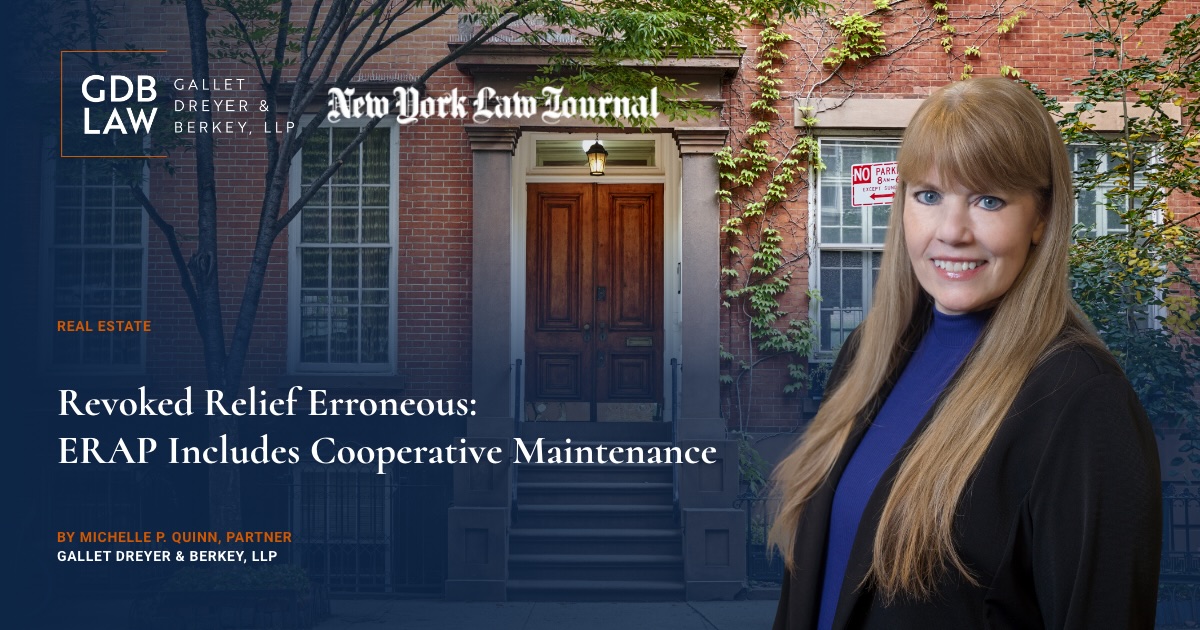Revoked Relief Erroneous: ERAP Includes Cooperative Maintenance

By Michelle P. Quinn, Partner
Gallet Dreyer & Berkey, LLP
The Emergency Rental Assistance Program was created to provide economic relief to low- and moderate-income households at risk of homelessness due to the pandemic. The program was rushed to meet the immediate threat of evictions due to the COVID shutdowns, and the hastiness of ERAP’s creation has led to a wave of litigation, including a recent New York Supreme Court ruling.
The COVID-19 pandemic and corresponding financial fallout compounded many longstanding housing stability and affordability issues faced by New Yorkers. In June 2021, the Emergency Rental Assistance Program (ERAP) was created to provide economic relief to low- and moderate-income households at risk of homelessness due to the pandemic. The program was rushed to meet the immediate threat of evictions due to the COVID shutdowns, and the hastiness of ERAP’s creation has led to a wave of litigation, including a recent New York Supreme Court ruling.
The Commissioner of the Office of Temporary and Disability Assistance (OTDA) was charged with establishing eligibility standards to receive funds distributed under ERAP. Eligible households included those in which the tenant or occupant had an obligation to pay rent for their primary residence. If the eligibility standards were met, unpaid rent that had accrued during the period of the pandemic (for up to a total of 15 months) was paid by OTDA directly to the landlord on behalf of the tenant, thereby eliminating the risk of eviction based on nonpayment of rent. At the inception of the program, no distinction was made between rental tenants, occupants...Read More
